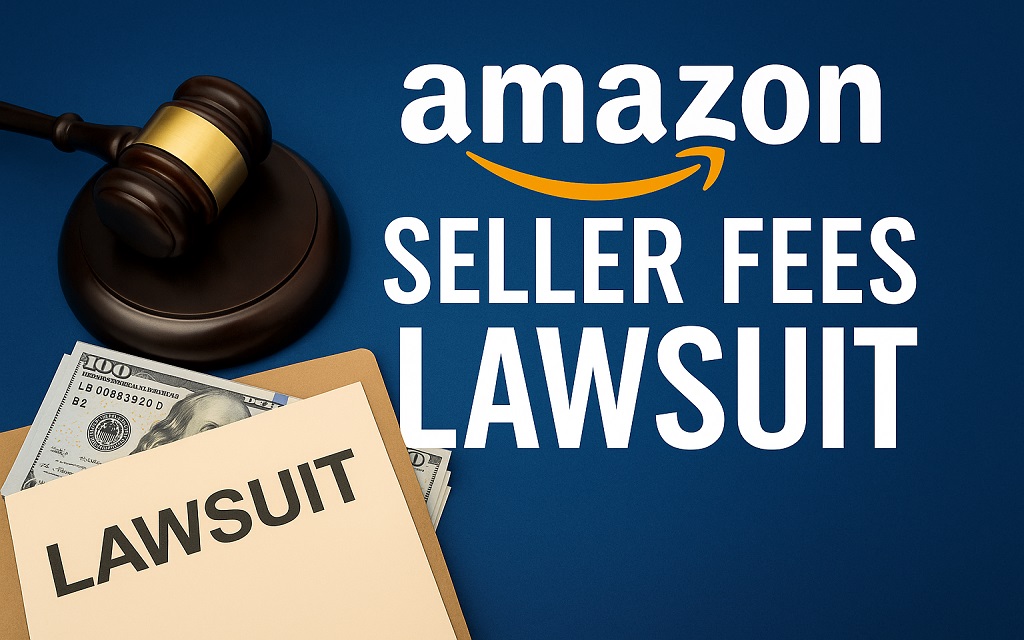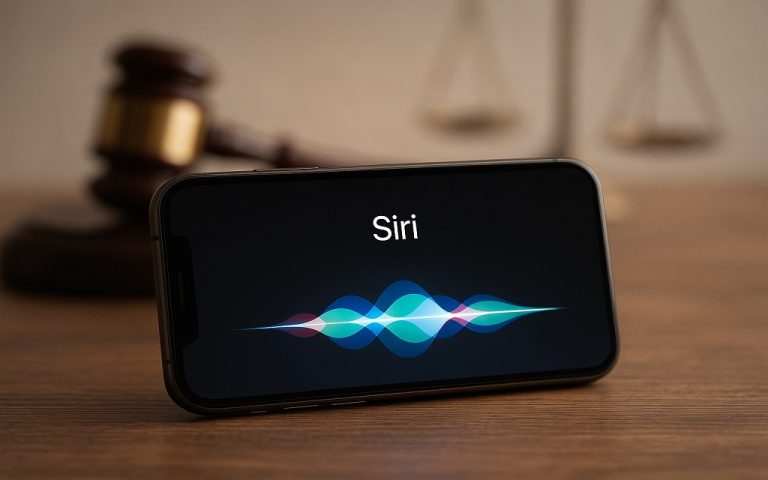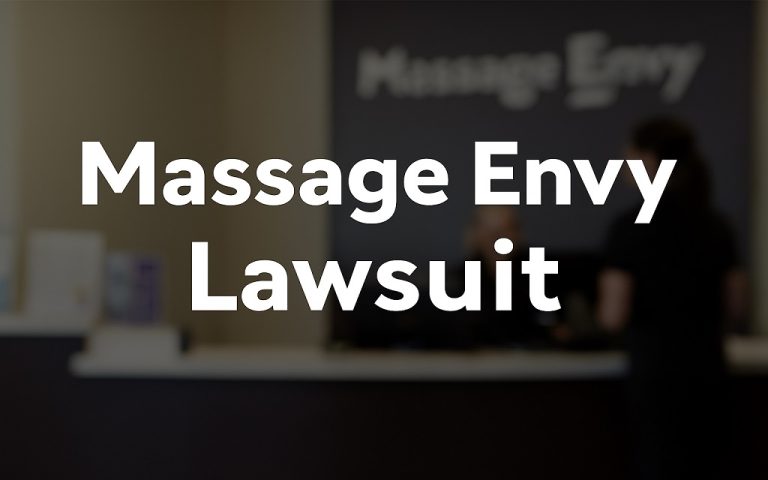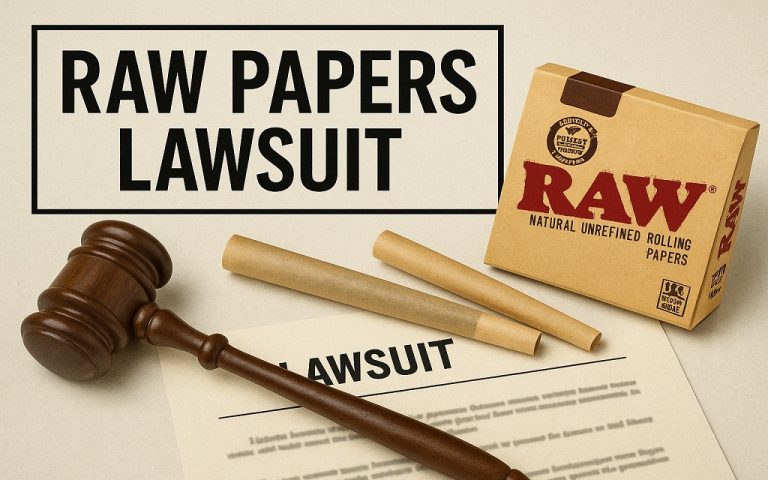The latest Amazon seller fees lawsuit may have an immediate impact on your profitability if you are an Amazon seller. Amazon is accused of employing unfair and anti-competitive practices to regulate the operations and compensation of third-party sellers in the Amazon seller fees lawsuit, which was filed by the Federal Trade Commission and 17 states.
This lawsuit illustrates how Amazon structures its fees, from shifting fulfillment expenses to new inbound placement charges. The Amazon seller fees lawsuit may result in refunds, significant policy changes, or even long-term restrictions on Amazon’s power, regardless of whether you sell high-volume SKUs or private-label products. Here’s what you should know to safeguard your earnings.
What Is the Amazon Seller Fees Lawsuit?
Amazon faces a major federal lawsuit. The corporation was accused of utilizing its market dominance to levy unjust seller fees in a complaint brought by the Federal Trade Commission (FTC) and 17 state attorneys general. According to the lawsuit, Amazon established its price structure to maintain market dominance, penalized sellers for using other providers, and inflated fulfillment costs.
The case focuses on how Amazon’s Fulfillment by Amazon (FBA) program determines and implements vendor fees. The FTC claims that by lowering competition, raising prices, and stifling profit margins, these activities harm third-party sellers and are illegal under antitrust rules. Customers are also impacted since they perceive more expensive and fewer options.
Amazon denies any misconduct. The lawsuit, according to the business, misunderstands the workings of online marketplaces. It makes the case that its pricing strategy accounts for the price of efficiency, innovation, and high-quality services. Regulators and seller associations, however, claim that Amazon’s fees frequently surpass 50% of overall sales, particularly for small and mid-sized firms.
You should now understand the implications of this Amazon seller fees lawsuit. Seller fees are not just business costs. They are legal battlegrounds. If the FTC succeeds, the marketplace structure could change. The way Amazon charges, bundles, and restricts seller services may face severe limits.
What Changes Has Amazon Made to Its Seller Fee Structure?
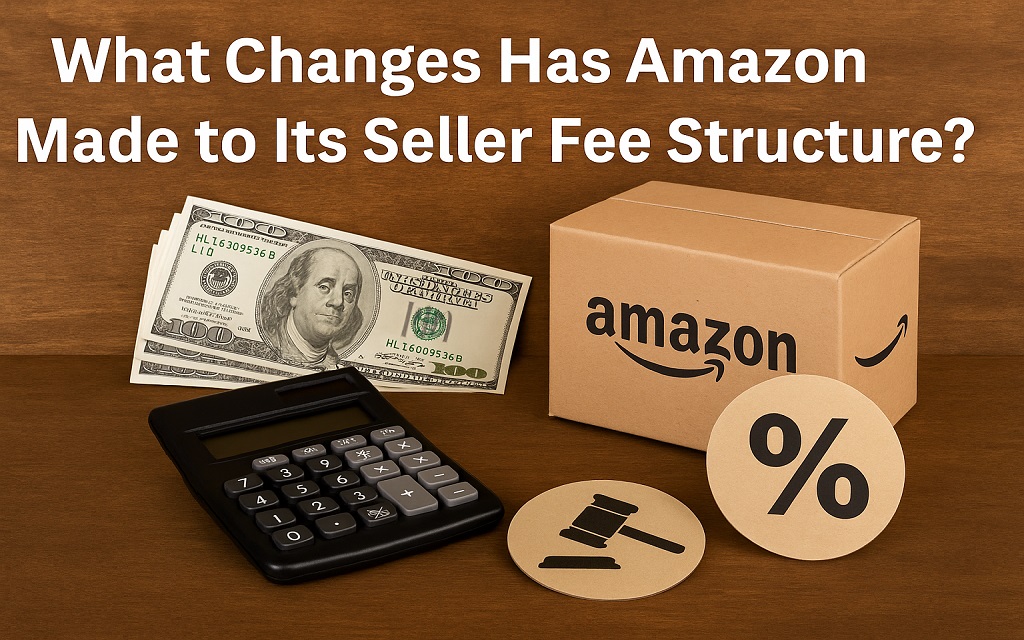
In late 2023, Amazon revealed a new seller fee schedule. It followed years of pressure and was launched just weeks after the FTC filed suit. The company said the changes aim to align fulfillment pricing with its regional delivery strategy. Critics say the move is a direct legal defense—an attempt to preempt further regulatory action.
Key Fee Changes Explained:
Inbound Placement Fee (Starting March 2024)
This is a new charge. It applies when sellers send inventory to a single Amazon fulfillment center. Amazon says this creates extra work because it must split and ship products across multiple locations.Standard-size items: $0.27 per unit
Large, bulky items: $1.58 per unit
Apparel: $0.32 per unit
Fee varies based on destination zone
- Incentives for Multi-Warehouse Shipping
Sellers can avoid the inbound placement fee. To do that, they must send inventory to multiple warehouses, as directed by Amazon’s algorithm. This reduces Amazon’s internal shipping costs but shifts operational complexity to sellers. - Discounts for Reduced Packaging
Amazon offers lower outbound fees if sellers use packaging that meets specific guidelines. This policy rewards those who optimize for volume, weight, and fulfillment speed. - Referral Fee Reductions for Apparel
Amazon decreased referral fees on lower-priced apparel items. For example:Items priced under $15: fee drops from 17% to 5%
Items priced $15–$20: fee drops from 17% to 10%
Low-Inventory Fee (Starting April 2024)
Sellers who keep low inventory levels in Amazon’s system may pay extra fees. According to Amazon, this deters logistically disruptive last-minute replenishment.
How Does It Affect Sellers?
These changes affect every seller differently. Small sellers may struggle to handle regional shipping. Bigger sellers can be eligible for fee reductions, but they also face additional sanctions. FBA-dependent private-label companies need to revamp their storage strategy, packaging design, and inventory planning.
It is essential to keep a careful eye on these developments. The inbound placement fee alone could cost sellers thousands per month. Combined with storage, returns, and referral charges, some sellers now report paying 50–55% of gross revenue in fees.
The timing of the restructuring also matters. Amazon made these announcements following the FTC’s case. The timing implies that the business is attempting to demonstrate to regulators that it can change without the involvement of the courts. However, detractors claim that the new model penalizes vendors who are unable to meet strict fulfillment requirements and adds even more complexity.
What Does the FTC’s Lawsuit Allege?
The FTC filed a complaint in the U.S. District Court for the Western District of Washington in September 2023. Seventeen states joined the case. Federal antitrust legislation in the United States, particularly the Sherman Act and the Federal Trade Commission Act, serves as the legal foundation.
Here’s what the FTC says:
1. Amazon Maintains Monopoly Power
The complaint says Amazon dominates two critical markets:
- The online superstore market
- The online marketplace services market
The FTC claims Amazon has built and maintained monopoly power through restrictive contracts, punitive pricing structures, and internal rules that punish sellers for using competitors.
2. Punishment for Using Alternatives
According to the lawsuit, Amazon penalized sellers who offered lower prices on Walmart, Target, or their own websites. These penalties included search suppression, Buy Box removal, and account warnings.
3. Coercive Fulfillment Model (FBA)
Amazon allegedly forced sellers to use FBA by:
- Making it the default for Prime eligibility
- Linking search visibility to FBA usage
- Structuring referral fees and outbound shipping in a way that makes third-party logistics providers less viable
4. Inflated Costs and Lack of Transparency
The FTC says Amazon’s fees increased steadily from 2014 to 2023. The total share of revenue claimed through fees went from 35% to over 50% for many sellers. Amazon allegedly buried key fee disclosures in complex dashboards, updates, and FAQ pages.
5. Harm to Sellers and Consumers
The Amazon seller fees lawsuit says these practices hurt both sellers and buyers. Sellers lose profitability and business freedom. There are fewer creative items, less competition, and higher pricing for consumers. The complaint claims that this leads to a “self-reinforcing cycle of dominance.”
Amazon denies all of this. The company says its fulfillment network delivers value and efficiency. It argues that sellers choose Amazon voluntarily. It also says it faces intense competition from Walmart, Shopify, eBay, and international platforms.
But the FTC’s position is clear: Amazon’s scale gives it power, and that power leads to harm. Regulators believe the legal system must intervene.
What Legal Arguments Support the FTC’s Case Against Amazon?
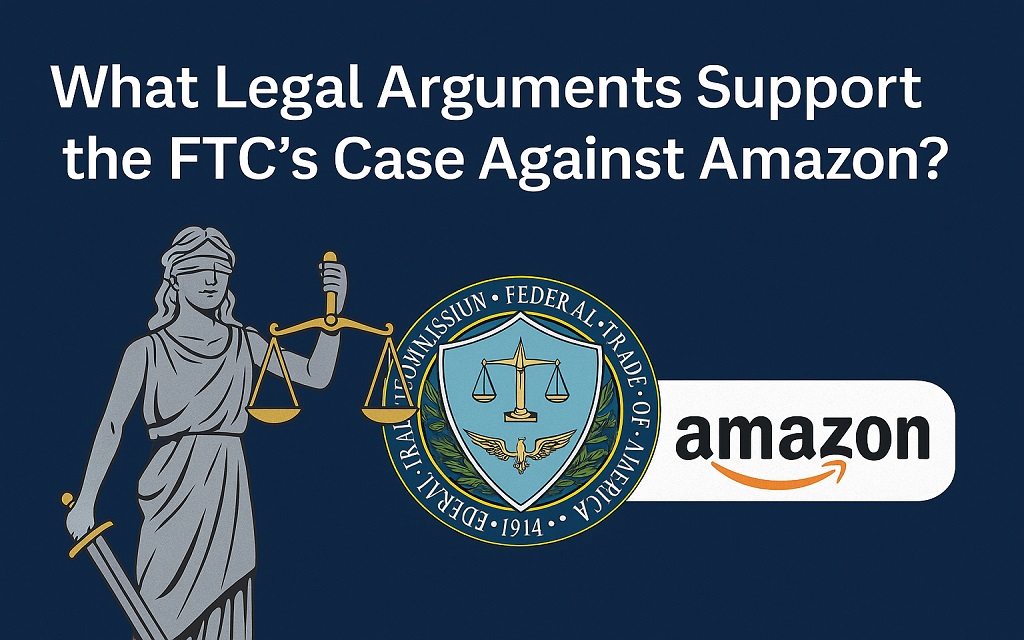
The FTC and 17 states build their case around core antitrust statutes. These laws exist to stop companies from unfairly controlling markets. The main laws at play are:
Sherman Antitrust Act (1890)
This law bans monopolization and attempts to monopolize. The FTC says Amazon used its power in online retail and fulfillment to push out competitors. The lawsuit argues that Amazon’s conduct meets the legal threshold for maintaining an illegal monopoly.
FTC Act (1914) – Section 5
This law prohibits unfair methods of competition. The FTC says Amazon punished sellers for working with rivals. These retaliatory actions—such as removing the Buy Box or burying listings—may violate this section.
Clayton Act (1914)
Though less central, this act bans exclusive dealing and tying arrangements that hurt competition. Amazon’s alleged conditioning of Prime eligibility on the use of FBA may fall under this category.
State-Level Antitrust Laws
States with their own antitrust laws include Massachusetts, California, and New York. Many mirror federal standards but offer broader definitions or easier standards for proving harm.
The FTC must show two key things:
Amazon Holds Monopoly Power
The lawsuit claims Amazon controls over 70% of online marketplace services. Additionally, it implies that Amazon’s Prime environment keeps both buyers and sellers locked in, posing obstacles for competitors.Amazon Abused That Power
The complaint focuses on anti-competitive conduct, including:Pricing restrictions
Forced use of FBA
Search algorithm manipulation
Fee hikes tied to exclusionary policies
If the court agrees, Amazon could face steep penalties or structural changes to its business.
What Are Amazon’s Likely Legal Defenses?
Amazon denies all claims. It argues its practices reflect competition, not coercion. Here’s what the company may say in court:
1. No Monopoly Power
Walmart, Target, TikTok Shop, Shopify, eBay, Temu, and dozens of other platforms are competitors of Amazon, according to the company. It argues that the internet marketplace is multi-channel and dynamic.
2. Voluntary Participation
Amazon says sellers choose to use its services. FBA and referral fees are optional. Sellers may opt out, list elsewhere, or use their own fulfillment. Amazon says it only rewards services that meet performance standards.
3. Efficiency Justification
Amazon could argue that bundling Prime with FBA creates efficiency and lower costs for buyers. Courts have accepted similar justifications if they lead to consumer benefits.
4. Lack of Injury
Amazon may dispute the harm. It might show that prices stayed low, customers benefited, and seller participation increased—undermining the claim of anti-competitive harm.
Still, the lawsuit’s strength lies in internal consistency. Sellers complain of rising fees, fewer options, and penalties for outside use. If the FTC shows pattern, structure, and systemic effects, Amazon may face severe legal exposure.
How Does This Lawsuit Affect Different Seller Types?
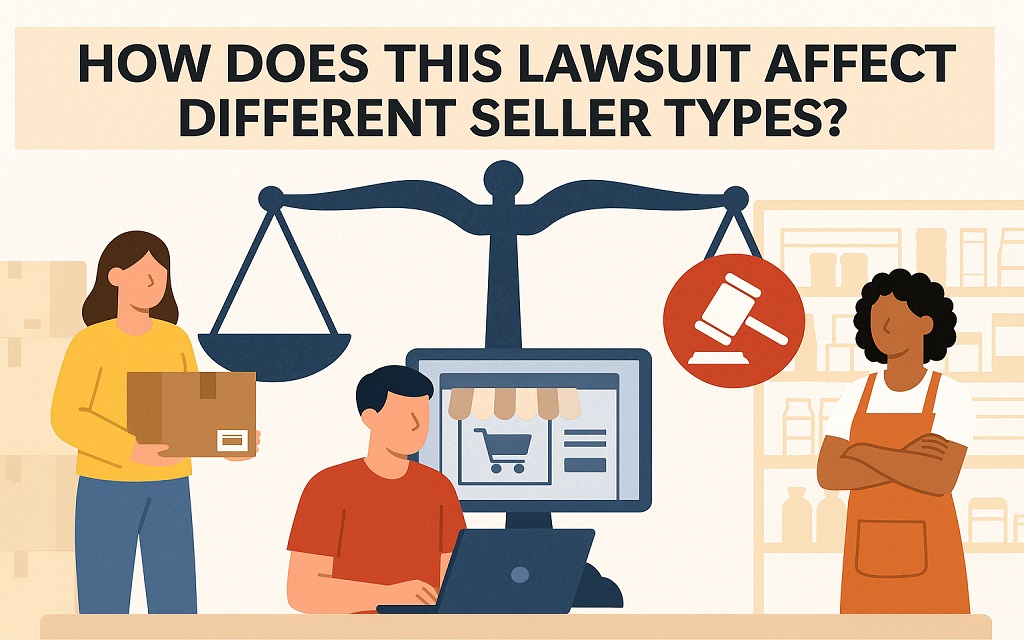
The impact of the fee structure and lawsuit varies widely. Here’s how different sellers experience these changes:
1. Small Third-Party Sellers
Small sellers cannot often ship to multiple regions. They rely heavily on FBA and Prime to drive sales. New inbound fees may raise their costs by 15–25%. Most small sellers can’t afford software or labor to optimize packaging and routing.
Example: A small brand sending 1,000 units/month to a single warehouse now faces $270 in new fees (at $0.27/unit). If returns rise or inventory dips, added fees stack further.
2. Private Label Brands
Private label sellers using Amazon as their main channel face even higher pressure. These brands often price between $15–$30. Referral fees, shipping, storage, and returns can eat over 50% of revenue. The lawsuit may bring relief—but only after a lengthy legal process.
3. High-Volume Sellers
High-volume brands may benefit slightly. They often qualify for discounts, meet inventory thresholds, and have logistics teams. But even they face growing unpredictability in how Amazon applies fees or suppresses listings.
Many sellers report “hidden” penalties—low search visibility, missing Buy Boxes, or delayed payments—when they move away from FBA. These tactics are key evidence in the lawsuit.
4. Multichannel Sellers
Those who sell on Shopify, Walmart, and DTC sites face the most significant dilemma. Amazon’s pricing parity policies historically punished them for offering lower prices off-platform. The lawsuit may lead to relief, but most sellers still fear retaliation.
You should document how Amazon applies fees and policies to your account. Monitor dashboard changes, monthly statements, and customer complaints. Keep screenshots and emails. These may support future claims or help legal counsel track abuse patterns.
That Is the Lawsuit Timeline and Key Legal Milestones?
Here’s a simplified case timeline based on public filings and precedent:
| Date | Milestone |
|---|---|
| Sept 2023 | FTC + 17 states file federal lawsuit |
| Oct–Nov 2023 | Amazon files motion to dismiss |
| Jan 2024 | Court hears preliminary arguments |
| Mid–2024 | The discovery phase begins |
| Late 2024 | Possible class certification motion |
| 2025 | Trial (if no settlement) or summary judgment |
These cases move slowly. Sellers should not expect refunds or policy reversals soon. The lawsuit may take two years or more to resolve. But discovery may reveal internal Amazon documents that shift public perception—and court rulings could come in phases.
What Should Sellers Do Now to Protect Themselves?
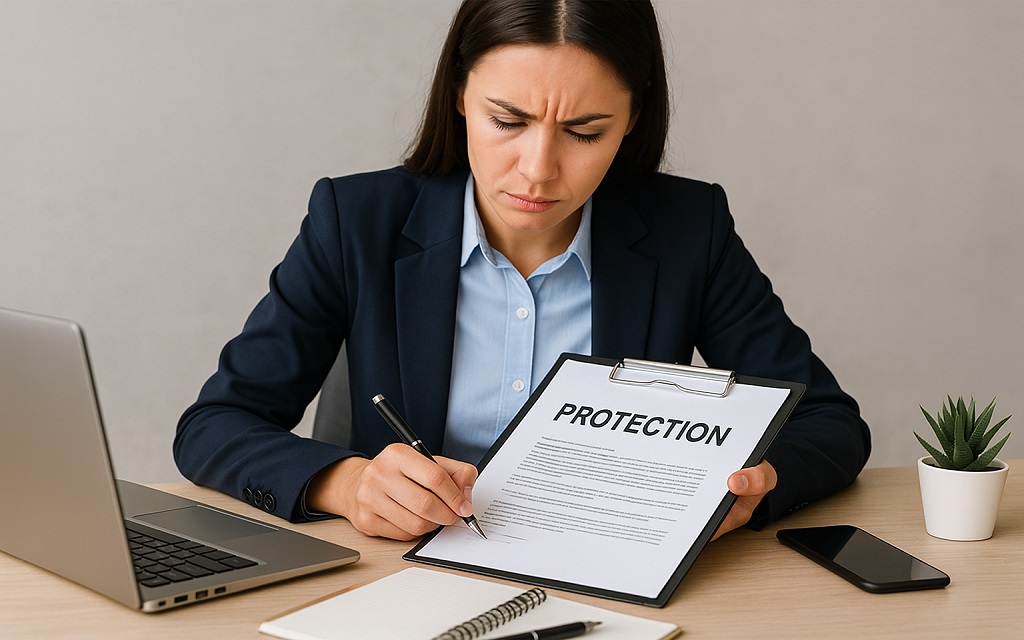
You should act now—don’t wait for court rulings. Here are essential steps for Amazon sellers:
1. Track All Fees and Policy Notices
Download detailed statements. Review new charges. Compare before/after costs. Pay close attention to:
- Inbound placement fees
- Outbound fulfillment shifts
- Storage and returns
- Inventory health scores
2. Document Policy Enforcement
If your account loses Buy Box or ranking after switching to a 3PL or adjusting prices off-platform, save the evidence. That data may support class action or FTC claims.
3. Consult Legal Counsel or Seller Groups
Many firms now review Amazon fee statements and can identify violations. Joining class actions early improves your chance of participating in any recovery.
4. Monitor the Lawsuit
Follow developments via seller forums, public court documents, or FTC.gov. FTC et al. v. Amazon.com, Inc., Case No. 2:23-cv-01495 (W.D. Wash) is the complaint number.
5. Evaluate Diversification
Consider whether you can shift some operations to other platforms or strengthen your DTC channel. Courts may force Amazon to reform, but relief takes time.
Does Amazon Face Similar Lawsuits or Global Cases?
Yes. Amazon is under legal investigation in several nations. This case fits into a larger pattern.
EU (European Union) Antitrust Proceedings
In 2022, the European Commission fined Amazon and forced changes to its Buy Box and seller data usage policies. Amazon’s use of third-party data to compete with vendors was the primary focus of the EU lawsuit.
Investigation by the UK Competition and Markets Authority (CMA)
The UK CMA examined Amazon’s treatment of third-party merchants. The probe ended with commitments from Amazon to improve fair competition. Those changes included more precise search algorithms and Buy Box transparency.
India: Ongoing Investigations
India’s regulators are investigating Amazon for price manipulation and unfair promotion of private-label brands.
U.S. State-Level Actions
California filed its own antitrust suit against Amazon over pricing parity rules. That case parallels some FTC claims.
FAQs
What is the Amazon lawsuit against sellers?
Amazon isn’t suing its sellers. The real issue is the government’s lawsuit against Amazon. Regulators claim that Amazon’s seller fees and fulfillment rules are unfair and harm small businesses.
What is the most significant lawsuit against Amazon?
The most significant case Amazon is facing comes from the Federal Trade Commission. It says Amazon used its power to raise fees, limit choices, and control how sellers do business.
What happens if you don’t pay Amazon seller fees?
If you don’t pay, Amazon may block your account or stop future payouts. It can also pull the money from your linked bank account to cover what you owe.
What happened to the FTC lawsuit against Amazon?
The case is still going. Amazon refutes the claims. Presently, both sides are assembling evidence and preparing for trial. No decision has been taken as of yet.
Why is Amazon being sued by the US?
The government says Amazon made it hard for others to compete. It claims that Amazon forced sellers into unfair deals and used its size to maintain its position.
What does FTC mean in the context of Amazon’s case?
FTC stands for the Federal Trade Commission. It’s the agency in charge of protecting buyers and making sure businesses play fair. They filed the lawsuit against Amazon.
Conclusion: What Comes Next for Amazon Sellers?
Finally, the Amazon seller fees lawsuit is more than just a court case. It signals a turning point in how marketplaces treat third-party sellers. Amazon’s vast reach, fast logistics, and Prime ecosystem offer value—but they also come with rising costs and tight controls.
You should oversee this lawsuit. Fee changes may continue, but legal oversight is growing. If the court sides with regulators, Amazon may be required to adjust its charging, promotional, and control policies for seller operations.
Here’s what to do next:
- Track every fee
- Document every change
- Explore legal help
- Stay informed on the case timeline
You should protect your business now. The outcome of this lawsuit may shape the future of e-commerce itself.
Disclaimer: This article provides a general overview of the Amazon Seller Fees lawsuit, based on publicly available information, and is intended for informational purposes only. It is not legal advice.

